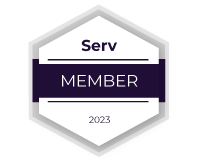Budgeting Automation Management Solution: Tools and Live MIS Reports
Budgeting automation management solutions have become an essential part of the modern business landscape. Automation helps companies streamline their budgeting process, saving time and money while ensuring accuracy and consistency. It also reduces the risk of human error and provides better visibility into spending trends. By using budgeting automation management solutions, businesses can make smarter decisions when it comes to managing their finances.
Types of Budget:
An organization’s final budget typically draws on several departmental budgets. Let’s explore the different types of budgets and their contributions to the development of a business plan.
Master Budget
Master budgets are aggregations of lower-level budgets developed by functional areas in an organization. It takes into account the financial statements, the cash forecast, and the financial plan. A master budget is used by management teams to plan the activities that need to be conducted to achieve their business objectives.
Operating Budget
An operating budget shows a business’s projected revenue and the expenses associated with it for a period of time. It’s very similar to a profit and loss report. It includes fixed cost, variable cost, capital costs, and non-operating expenses. Although this budget is a high-level summary report, each line item is backed up with relevant details. This information is useful for checking whether the business is spending according to its plans.
Cash Budget
Cash flow budgets estimate the amount of money coming into or leaving a business for a given period. By estimating payables and receivables, companies create cash budgets based on sales forecasts and production.
Financial Budget
The purpose of this budget is to establish how much capital businesses will need and when they will need it for short-term and long-term purposes. An overall assessment of your business’s health is determined by assets, liabilities, and stakeholder equity, which are all part of a balance sheet.
Static Budget
A static budget is one that is based on an estimate of revenue and expenses that will remain the same over the course of the year. This budget contains line items that can be used to meet goals regardless of growth or decline in sales. An organization with a fixed budget, such as a nonprofit, a public educational institution, or a government body, usually prepares static budgets.
What is budget automation?
A budget automation system streamlines financial processes and workflows so that budgeting becomes more efficient and accurate. This robotic process automation (RPA) optimizes tasks like:
- Real-time spending data and tracking: Review company spending activity without waiting for the bank statement at the end of each month. Every transaction and purchase are automatically logged and is accessible after payment.
- Expense management and reimbursements: Instead of completing manual expense reports and collecting paper receipts, employees seek approval for purchases in advance from their managers. Their purchases can be reconciled instantly and their managers can reimburse them immediately.
- Invoice management and accounts payable: With automatic data entry, finance teams can process invoices more efficiently and reduce processing time.
- Bookkeeping and financial reporting: In seconds, finance reports such as the P&L statement can be generated using automation tools that track and document real-time fiscal activity throughout the year. Rather than reconciling every payment and writing it in manually, accounting is much easier when it’s just verifying the numbers.
Finance teams often jump between different tools to accomplish a single task. Several or all of these processes can be consolidated into one platform using budget automation tools. Finance teams and budget controllers can collaborate more efficiently and transparently when they have a single source of truth for company funds.
There is more to budget automation than just saving money. Using it, a company can optimize its expenditures, record transactions, process payments, and report its finances. This process streamlines all the crucial tasks that contribute to the business’s profitability.
Why are team budgets so tricky to manage?
A company’s budget can be highly complex, especially if it is growing at a rapid pace. A lack of team buy-in and unclear job responsibilities often contribute to budgeting inefficiency. Here are a few potential factors:
Uncertainty: It can be difficult to accurately predict how much a team will need to spend on various expenses, such as equipment, travel, or training. Additionally, unexpected events or changes in the market can cause expenses to fluctuate, making it challenging to stick to a pre-determined budget.
Multiple stakeholders: Teams often have multiple stakeholders who may have different ideas about what the team’s budget should be used for. For example, team leaders may want to invest in expensive technology, while financial managers may want to limit spending to stay within overall organizational budgets.
Limited resources: Many teams have limited resources, whether that’s in terms of staff, time, or money. This means that team members may need to make trade-offs or prioritize certain expenses over others.
Complexity: Team budgets can be complex, especially if the team is working on a large project or has multiple expenses to account for. Managing all of these moving parts can be difficult, especially if team members don’t have a strong financial background or the right tools and resources to help them.
Automation can help manage team budgets by streamlining and automating tasks such as data collection, analysis, and reporting, thereby saving time, reducing errors, and improving overall budget accuracy and efficiency.
How to choose the right budget automation software?
It is crucial for your business to select the best budgeting tool based on its size, revenue, expense policies, and business model. It is recommended that you carefully examine your budgeting process in order to assess which areas need extra attention. This will inform your search.
However, not all budgeting tools are created equal. Some have unique features and benefits. Here’s what to look for in a great budget automation software:
- Real-Time Insight into Your Data
A robust budgeting solution can quickly & easily give the management insight into variances and provide a more routine process of reviewing discrepancies.
- Flexible Forecasting
Forecasts that combine actuals, budgets, annualized values, inputted values, and/or percentages.
- Data-Collection and Centralization
It enables the management to keep a close eye on Project Cost Management (PCM), productivity levels, and other key performance indicators.
- One-Click Closures and Reports
One of the main benefits of using the automated features of project budgeting software is the ability to generate detailed reports with the click of a button.
- Improved Transparency
Budget management software will help you deter and fight fraud involving inflated expenses.
- Efficient Reporting
Reports provided by budget management software can give helpful insights that result in lower costs.
- Fewer Costly Errors
Some Errors can cause entities to lose crores annually. An effective budget management software gets rid of the possibility of calculation errors.
- To Limit Expenditures
Budgeting software can draw up records of previous transactions with a few clicks which can help you limit your spending.
The best budgeting tools will scale to your growing needs, whether you have one user or a hundred. While still providing you with the same level of visibility into your company’s finances and spending.
Benefits of Budget Automation Solution
Budget automation solutions can be used to streamline processes such as forecasting, reporting and auditing, helping to ensure that your finances are always in order.
- Monitor performance and progress with entity-level budgeting
Monitoring the performance focuses on costs and ensures implementation is within budget.
- Manage cash flow more efficiently
The main objective of managing cash flow is to track and analyze the amount of cash received minus business expenses. This helps estimate what you’ll make and spend in the future.
- Troubleshoot financing problems
Direct, allocate, manage, and employ financial resources per needs, resulting in increased performance and income.
- Allows Proactive Planning of Potential Revenues
Financial budgets are not just important for cost analysis but are incredibly useful in having a fair idea of how much revenue your business is expected to make.
Dashboard and Live MIS Reporting
Trend Analysis
Excel-based Input/Output Budget
Dashboard-Reports
SPC NXT’s BAMS solution, such as Trend Analysis, Strategic Planning, Documentation, and multiple software platforms, helps businesses spend and budget smarter using several robust features in one tool. BAMS provides a cost-effective way to manage budgets and reduce manual errors. It also makes it easier for businesses to track their spending and ensure that they stay within their budget.











